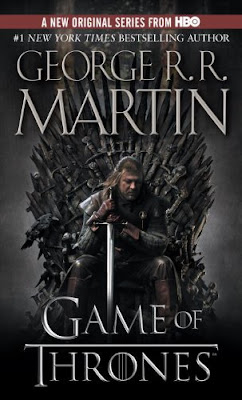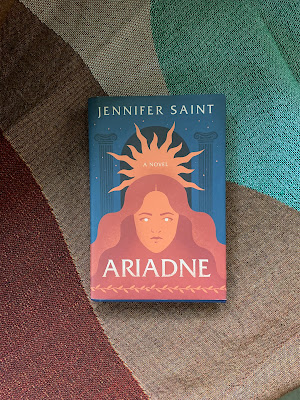A Game of Thrones: A Song of Ice and Fire, Book 1
 |
| Photo courtesy |
I have had my share of fantasy readings prior to picking up “A Game of Thrones” by George R.R. Martin – I have read J.R.R. Tolkien's epic fantasy trilogy, “The Lord of the Rings”; its prequel, “The Hobbit”; the comprehensive backgrounder to the trilogy, “The Silmarillion”, and; “The Children of Hurin”, as well. Some years back, I also read, with no small influence from my husband (the fantasy “purist”, he likes to be called) the first two books in Terry Brooks' Shannara series, “The Sword of Shannara” and “The Elfstones of Shannara”, which I thought paled in comparison to the works of Tolkien. Not to include the Pevensies, Harry Potter and Gregor the Overlander, that just about sums up my fantasy reading experience.
And then I pick up this book, “A Game of Thrones”, and I am overwhelmed. Truly.
“A Game of Thrones” is the first book in “A Song of Ice and Fire”, a series of epic fantasy novels set in the fictional world of Westeros. The narrative shifts points of view, from one main character to another, and these are the members of the warring family lines including, but not limited to, the Houses Stark, Baratheon, Lannister, Tully, and Arryn, each with their own sigil and colors. Although the main storyline in this book is the one set in the Seven Kingdoms, where “the game of thrones” is being played, the novel also follows two other important storylines: the one set on The Wall, a hundred-feet tall, miles-long barrier that protects the Seven Kingdoms from the wilderness of the north and manned by the black brothers of the Night's Watch, and the one set beyond the sea way out in the East, in the Free Cities, where Daenerys Targaryen and her brother, Viserys, the last of the Targaryens who rightfully owned the throne to the realm, have been exiled.
At first, the host of names was a deluge; the various characters, some of whom were namesakes of each other, threatened to overwhelm me. Thankfully, the appendix was there, and became my instant best friend. Later, the names of the places and kingdoms likewise posed the same threat; gratefully, again, the map of Westeros was there to lend a hand (never mind the small print that hurt my eyes). Those very minor setbacks solved, I proceeded with my reading, and was instantly hooked.
Fantasy is pure escapism, and that is what I love most about it. Even though this book felt more medieval to me than fantastical or magical, I loved the fact that it transported me to the world of kings and queens, lords and ladies, knights, dragons, kingdom wars, swords and lances, even eunuchs and horselords. I loved how the characters were depicted through their different points of view; Sansa's narratives gave me the impression that she was a slut, Tyrion's dialogues reflect the gigantic wit and sarcasm that dwarfed his physical deformity, and Daenerys' stories show courage and determination. The archaic language even added flair and a hint of romance to the novel; reminiscent of Tolkien's works, but “A Game of Thrones” is definitely on a league of its own.
Prior to reading this book, I have heard that Martin has a penchant for killing off characters, even the "decent" ones. Some people have shied away from the series because of that, but I wasn't one to be deterred. I will not pretend that I was a little shocked at the turn of events in the story, but Martin, for sure, has his reasons. For what it's worth, the novel evoked so much emotion in me, it was that good. I haven't felt like that when reading a book since The Pillars of the Earth by Ken Follett.
I'm afraid that my short review (if I can even call it that) will not do justice at all to the awesome work that is this book, so I guess I will say no more and just adopt my husband's rating: 6 out of 5 stars.
Winter is coming!
Rating (the real one): 5 out of 5 stars


Comments